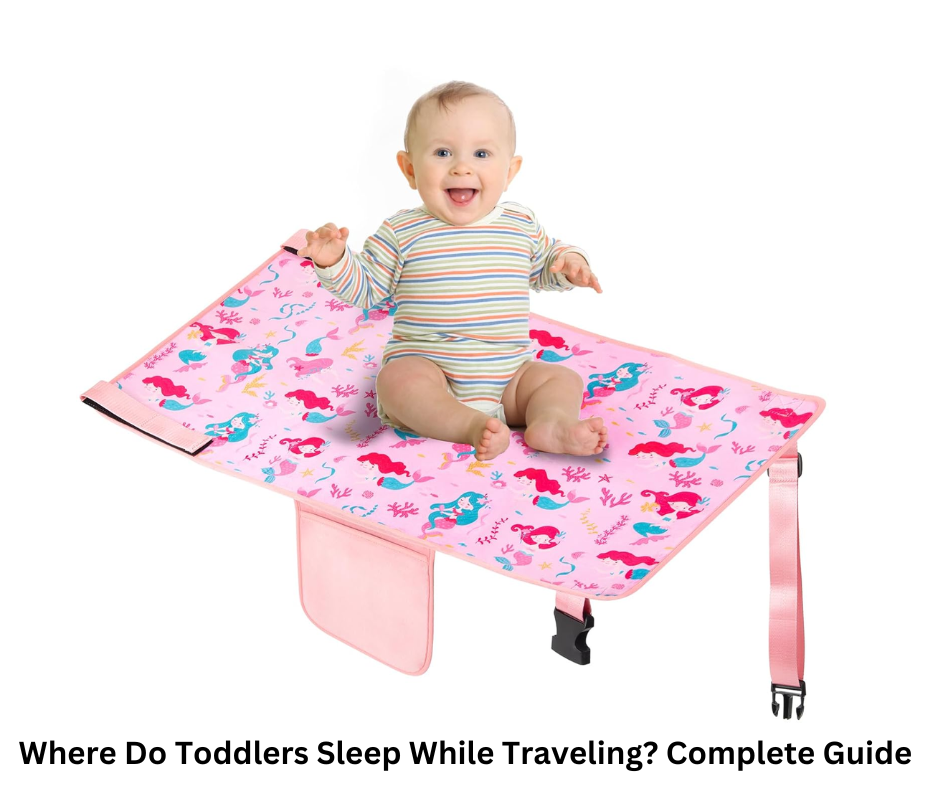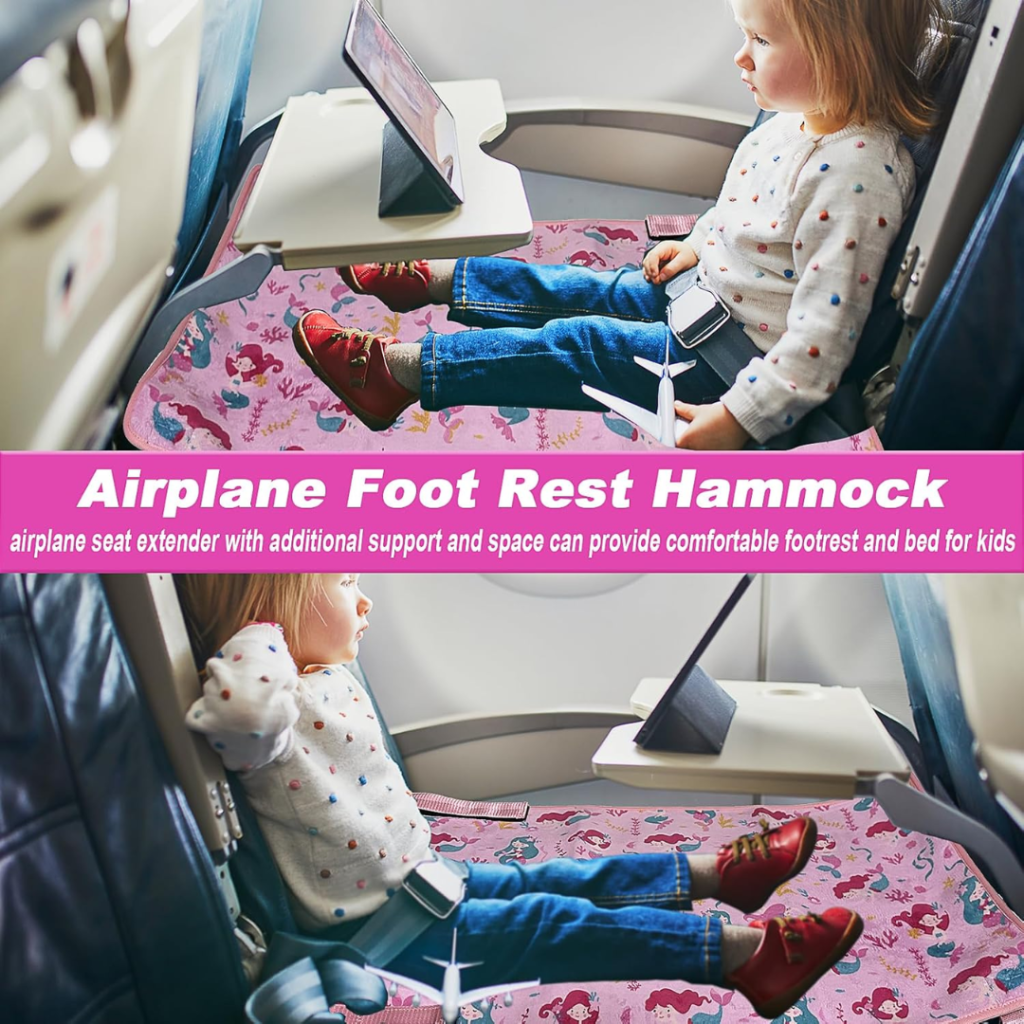Have you ever wondered where your toddler will sleep while traveling? Whether it’s a family vacation or a weekend visit to relatives, figuring out the best sleeping setup can be a real challenge. After all, a well-rested toddler means a happier, more enjoyable trip for everyone.
Traveling disrupts routines, and toddlers thrive on routines. From cramped hotel rooms to unfamiliar guest bedrooms, finding a safe, comfortable sleep solution can leave many parents scratching their heads. Add to that the endless options for travel cribs, inflatable beds, and portable sleep aids, and it’s no wonder parents feel overwhelmed.
But don’t worry—this guide is here to help! We’ll explore practical, easy-to-follow solutions for ensuring your toddler sleeps soundly, no matter where your travels take you. You’ll discover tips, tools, and tricks to make bedtime stress-free while keeping your little one comfortable and secure.
So, where do toddlers sleep when traveling? Let’s dive in and find the perfect answer for your next adventure.
Why Toddler Sleep Needs Matter
Toddlers are creatures of habit, and their sleep routine plays a huge role in their mood. When they get the right amount of rest, they’re happier, more cooperative, and better able to handle the excitement of travel. Miss out on those crucial hours of sleep, and you may face tantrums, tears, and a cranky little traveler.
At home, your toddler sleeps in a familiar space. Their crib, mattress, favorite blanket, and maybe a beloved stuffed animal all work together to create a sense of comfort. This familiar environment helps them settle down and fall asleep faster. When you’re traveling, that sense of familiarity is missing. A new place with different sights, sounds, and even smells can make it hard for your toddler to relax.
Travel also disrupts routines. Late flights, long car rides, or jam-packed vacation schedules can throw off bedtimes and nap schedules. Without a plan in place, it’s easy for your child’s sleep to get out of sync, leading to overtired meltdowns.
That’s why preparing for your toddler’s sleep while traveling is essential. By creating a setup that feels as close to home as possible, you can help your little one feel safe and secure, even in an unfamiliar environment. A bit of planning goes a long way in ensuring restful nights—for everyone.

Creative Sleep Solutions for Traveling Toddlers
Traveling with a toddler can feel overwhelming, especially when it comes to bedtime. But with a little preparation, you can create a cozy and safe sleeping spot wherever you go. Here are some ideas to consider:
Hotels
Many hotels offer cribs or pack-and-plays, but don’t assume one will always be available. Call ahead to check and reserve what you need. If you’re unsure about the quality or cleanliness, bringing your own portable crib or travel bed might be a better option.
For a more stress-free stay, look for family-friendly hotels. These often provide extras like blackout curtains or quiet rooms, which can help your toddler sleep more soundly.
Vacation Rentals
Airbnbs or vacation homes offer a lot of flexibility. You can rearrange furniture to create a safe sleeping area for your toddler. For example, placing a travel crib in a quiet corner or using a spare room can replicate the calm environment they’re used to at home. Many rentals also allow you to set up a more relaxed routine compared to a busy hotel.
Camping or Outdoor Adventures
If you’re heading into the great outdoors, a toddler sleeping bag or portable travel tent can be a lifesaver. These options are lightweight, compact, and easy to pack. Just make sure the setup is safe by choosing a flat, clean surface away from hazards like open flames or steep drops.
Staying with Family or Friends
Sleeping at someone else’s house can be tricky, but portable toddler beds or inflatable mattresses make it easier. These beds are compact and quick to set up, giving your child a familiar space to rest. To avoid overstimulation, establish a quiet bedtime routine and ensure the sleeping area is separate from the action.
On-the-Go (Planes, Trains, Cars)
For long trips, compact travel cribs or bassinets are excellent options. These are designed for portability and often fit into tight spaces. If a proper sleep setup isn’t possible, focus on naps. A favorite blanket or travel pillow can make naps in a car seat or stroller more comfortable.
With a bit of creativity, you can find the perfect sleeping solution for your toddler, no matter where your journey takes you.
What Your Toddler Can Sleep In While Traveling
When it comes to bedtime on the road, comfort is key. The right clothing, bedding, and sleep setup can make a big difference in helping your toddler settle down in an unfamiliar place.
Dressing for Comfort
Choose sleepwear that matches the weather. For warm destinations, lightweight and breathable pajamas work best. They help keep your toddler cool and comfortable. If you’re traveling to a colder place, pack layered sleepwear. Layers let you adjust their warmth without disturbing their sleep.
Bringing Familiar Bedding
A touch of home can make any place feel more comforting. Packing your toddler’s favorite blanket or stuffed animal can help ease their transition to a new sleeping environment. Familiar items make them feel safe and relaxed. If space is limited, consider compact travel bedding like a small quilt or foldable blanket.
Portable Sleep Solutions
For toddlers, having their own dedicated sleep space is important. Portable travel beds, toddler sleeping bags, or inflatable mattresses are excellent options. These items are easy to carry and set up. Reliable choices include the Baby Bjorn Travel Crib, known for its durability, and the Hiccapop Inflatable Toddler Bed, popular for its ease of use.
Choosing the right combination of clothing, bedding, and sleep gear can create a restful space for your toddler, no matter where you’re staying.
Keeping Your Toddler’s Sleep Routine on Track
Traveling doesn’t have to mean sleepless nights for your toddler. With a few adjustments and some consistency, you can help them settle into their routine even far from home.
Stick to Familiar Bedtime Rituals
Your toddler finds comfort in routines. Stick to the same bedtime rituals you use at home. Whether it’s a warm bath, a favorite bedtime story, or a soothing lullaby, these steps signal that it’s time to wind down. Bringing along their favorite book or stuffed animal can add an extra layer of familiarity.
Adjust to New Time Zones Gradually
If you’re crossing time zones, help your toddler adjust slowly. Shift their bedtime by 15-30 minutes each day before you travel. Once you arrive, try to match their schedule to the local time. Daylight exposure in the morning can help reset their internal clock.
Create a Calm Sleeping Environment
A dark and quiet space is essential for restful sleep. Use portable blackout shades to block out light, and consider a sound machine to mask unfamiliar noises. These small tools can make a big difference, especially in noisy or brightly lit accommodations.
Limit Screen Time Before Bed
It’s tempting to rely on screens during travel, but too much screen time can disrupt sleep. Keep devices off at least an hour before bedtime. Instead, focus on calming activities like reading or quiet play.
With these tips, you can keep your toddler’s sleep routine intact and ensure everyone gets the rest they need while traveling.
Common Challenges and Simple Solutions for Toddler Sleep While Traveling
Traveling with a toddler comes with its share of sleep-related hurdles. From adjusting to new time zones to dealing with unfamiliar sleeping arrangements, parents often face unique challenges. Here’s how you can tackle them effectively:
Handling Jet Lag and Time Zone Changes
Jet lag can disrupt your toddler’s internal clock, making bedtime a struggle. To ease the transition, gradually adjust their sleep schedule a few days before your trip. If you’re traveling east, move bedtime earlier; for westward trips, make it later. Once you arrive, expose your toddler to natural light during the day and stick to the local schedule as much as possible.
Overcoming Resistance to New Sleeping Setups
Toddlers are often wary of unfamiliar spaces. To help them adjust, do a trial run with any new travel bed or portable crib at home before your trip. Let them nap or play in it so it feels familiar and safe. Bringing along their favorite blanket or stuffed animal can also provide comfort and familiarity.
Managing Space Constraints in Accommodations
Hotel rooms or vacation rentals can sometimes feel cramped. Look for versatile, compact sleep solutions like inflatable toddler beds or foldable travel cribs. These options are easy to pack and fit into tight spaces. If floor space is limited, consider moving furniture to create a safe sleeping area.
By planning ahead and staying flexible, you can navigate these challenges and ensure your toddler—and you—enjoy better rest during your travels.

Real Stories and Helpful Hacks from Parents
Sometimes, the best advice comes from parents who have been there. Here are a few stories and tips from families who found creative ways to help their toddlers sleep while traveling.
“The Trial Run Saved Us!”
“When we first introduced a travel crib, our son refused to sleep in it,” says Emily, a mom of two. “Before our next trip, we set it up in his room for a week and let him play and nap in it. By the time we traveled, he went to sleep without a fuss!”
The Power of Familiar Scents
One family discovered a simple trick to help their toddler settle in unfamiliar places. “I pack a small pillowcase from his bed at home,” explains Sarah, a mom of a three-year-old. “The familiar smell calms him and makes any bed feel like home.”
Turning a Closet into a Mini Bedroom
During a stay in a crowded vacation rental, James and his wife got creative. “We used the walk-in closet as our daughter’s room. It was dark, quiet, and gave her the separation she needed. We kept the door cracked for airflow and used a travel monitor to check on her.”
The White Noise Wonder
“Portable sound machines are a lifesaver,” shares Lily, a mom of twins. “They drown out hotel hallway noise and help my kids sleep through the night.”
These real-life solutions show that with a little ingenuity and preparation, even the trickiest travel sleep situations can be handled with ease.
Conclusion
Traveling with a toddler can feel overwhelming, but managing their sleep doesn’t have to be. With a little planning and the right tools, you can ensure your little one gets the rest they need, no matter where you are.
Remember to stick to familiar bedtime routines, adjust to new time zones slowly, and create a calm, quiet sleep environment. Packing familiar bedding and investing in portable sleep solutions can make a big difference. Don’t forget to prepare for challenges like jet lag or limited space—being flexible and creative can help.
With these tips in mind, you’re ready to make toddler sleep while traveling easier. Have any unique tricks or experiences to share? Leave a comment below and help other parents make their next trip a restful one!
How to Make Your Toddler Sleep Article Stand Out
To make your article truly helpful and unique, you can go beyond the basics. Here are some ways to add extra value for your readers.
Original Research
Gather insights directly from parents. Consider conducting a survey or browsing forums where families share their experiences. You can use real-world tips and recommendations to show readers what products and solutions worked best for others in similar situations.
Honest Product Recommendations
Give your readers honest reviews of products that help with toddler sleep on the go. Talk about portable cribs, travel beds, sound machines, or sleep aids. Share both the pros and cons of each option so parents can make informed decisions.
Expert Opinions
Quote pediatric sleep experts to back up your advice. You can also link to trusted sources, like child sleep books or health websites, that offer authoritative insights into toddler sleep needs while traveling.
Visuals
Including visuals like photos or infographics can make your article more engaging. Show how to set up a travel crib in a hotel room, or demonstrate how to create a cozy, safe sleep space with compact products. Visuals help readers visualize the solutions you’re recommending.
By including original research, product reviews, expert advice, and helpful visuals, you can make your article more engaging and informative for parents seeking practical solutions for toddler sleep while traveling.
SEO Tips for Optimizing Your Article
To ensure your article reaches the right audience, it’s essential to integrate SEO strategies that help it rank higher in search results. Here’s how you can naturally incorporate the primary keyword and LSI keywords:
Use Keywords in Headings and Subheadings
Include your main keyword and LSI keywords in headings and subheadings, like:
- What Do Toddlers Sleep In on Vacation?
- What Does a 2-Year-Old Sleep In on Vacation?
This helps both readers and search engines understand what your article is about.
Incorporate Keywords in Body Text, Image Alt Tags, and Meta Descriptions
Throughout the body of your article, use your keywords naturally. For example, mention “what toddlers sleep in when traveling” or “best travel beds for toddlers” in relevant sections.
Also, don’t forget to add keywords to image alt tags and meta descriptions. For example, an image of a travel crib might have an alt tag like “portable crib for toddlers sleeping on vacation.” This boosts your chances of appearing in image searches.
Optimize for Featured Snippets
To increase your chances of appearing in featured snippets, provide a clear, concise list of solutions, like this:
- Portable cribs
- Toddler sleeping bags
- Travel bassinet for planes
This makes it easier for search engines to pull out your content as a featured snippet.
Use a Q&A Format for FAQs
Create a Q&A section that answers common questions like:
- “What should a toddler sleep in when traveling?”
- “What do 2-year-olds sleep in when traveling?”
This format is not only helpful for readers but also optimized for voice search and featured snippets.

Clark Lubowitz is a parenting expert with over 10 years of experience in toddler care and child development. Holding a degree in Early Childhood Education, he specializes in blending modern technology with parenting, offering expert advice on the best toddler gadgets. Through his work on ToddlerAwesome.com, Clark provides valuable insights to help parents make informed decisions for their little ones.
